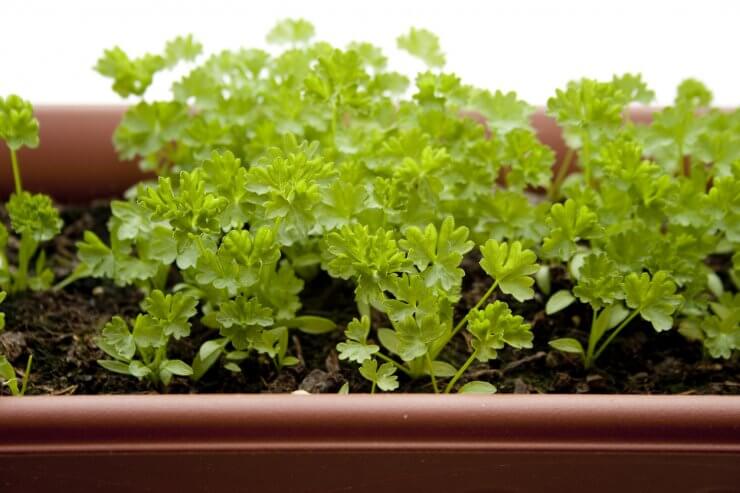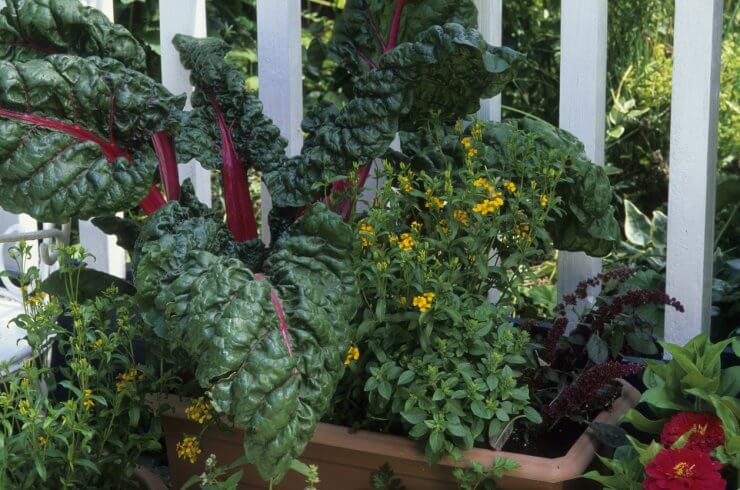
You’ve heard the story. You can probably tell the story. You’re growing vegetables in window boxes, and they’re coming along just fine. You run out to do some errands one hot afternoon, and when you get home, every single vegetable and herb in your window box is a droopy, wilty mess.
It’s certainly happened to me. I know what you’re thinking. “Amanda! Window boxes are for pretty flowers or maybe herbs. You can’t grow vegetables in them!” Or maybe you’re like, “C’mon Amanda. Just water your plants, and they’ll be fine. We all get a little droopy in the heat.” You might even be wondering why I’d try growing vegetables in window boxes when there are perfectly good raised bed ideas and container gardening ideas out there.
Confession time. I do enjoy flowers. They can be great companion plants for helping prevent pests in the garden. They can attract pollinators. Heck, they can just sit there and look pretty. But with a few exceptions, you can’t eat them. I prefer to put my gardening energy into fruits, vegetables, herbs, and spices. It just so happens a lot of them are also pretty and can give you the same aesthetic joy that flowers can. So window boxes + colorful herbs and vegetables = curb appeal and table appeal. But there are some tricks to pulling it off successfully.
Discover 7 top tips for growing, harvesting, and enjoying tomatoes from your home garden—when you access the FREE guide The Best Way to Grow Tomatoes, right now!

Growing vegetables in window boxes: What you need to succeed
1. Choose your veggies wisely. Sure, this applies to most things in life, but if you plan on growing vegetables in window boxes, you have to choose the right vegetables. I’m not one to say that anything is impossible, but it is pretty unlikely that you’ll be able to grow heirloom beefsteak tomatoes or Golden Bantam corn. You can, however, plant a variety of leafy greens, radishes, beets, some varieties of beans and peas, and herbs.
2. Consider the container. There is no “standard” size for window boxes, so it’s up to you to pick the correct container for the vegetables you want to plant. The depth of the box will determine which vegetables you can grow, and the length will determine how many vegetables you can plant. For our purposes, depth is more important than length. Ideally, choose a window box that is 7 to 12-inches deep, but don’t forget to think about weight, too. Obviously, the deeper a container is, the heavier it will be once it’s filled with soil (and especially once that soil is wet).
3. Make note of the material. Window boxes may be made of wood, plastic, terra cotta, metal, metal frame with a coco liner, resin, ceramic, stone, and composites. The material, along with impacting the weight of the window box, will also affect how well the container retains water. Plastic and composites will retain moisture longer, while wood, terra cotta, and coco liners allow for more drainage.
4. Stay cool with color. Or keep warm with color. Dark colors will absorb heat more than light colors. While most vegetables enjoy warm, sunny days, you also don’t want to cook them. It’s not that one is better than the other; it’s just something to consider.
5. Water well. Water is one of the biggest concerns when you’re growing vegetables in window boxes, or any containers, for that matter. On hot days, the soil can dry out quickly. You may even need to water your container vegetables twice a day when that thermometer gets close to triple digits. There are a few ways around this if you’re the forgetful type or if you just don’t have a lot of time to check on your veggies. You can set up a drip irrigation system, set your sprinkler on a timer, check out clay pot irrigation, or explore a few of these hacks for watering container gardens.
6. Select the right soil. This one’s pretty straightforward. Be sure you get lighter container potting soil rather than in-ground or raised bed soil.
7. Compost can help. When you first start growing vegetables in window boxes, mix some finished compost in with your potting soil. This gives your veggies a boost of nutrition and will continue to slowly release more of that nutrition as the compost continues breaking down.
Successful growing of vegetables in window boxes isn’t that much different than growing them in other containers. And once you get the hang of it, you can have a beautiful and well-curated garden right outside your window.
Have you grown a garden in a window box? Leave a comment below. I’d love to read about your experience!
Discover 7 top tips for growing, harvesting, and enjoying tomatoes from your home garden—when you access the FREE guide The Best Way to Grow Tomatoes, right now!





I have some new plastic rail containers – Do I need to drill holes in the bottom for drainage? whats best way to fill with soil and for drainage – do I need to add small gravel to bottom before soil.?
Hi plant every year and i always have problem with insect under the leaves and two years now they are very small and having flowers and i have to pull them out just and how i plant them they just a little and that it
Hmmm, I would start with an insecticide. I made a tutorial for making homemade bug spray (for your plants) in our July 2020 issue here – https://foodgardening.mequoda.com/articles/homemade-bug-spray-for-vegetable-plants/?t=739 And if it’s not the bugs killing them, you might consider adding new soil mixed with compost, too, it could be that the soil is tapped out of nutrients if you’ve been using the same soil for a few years.
We had some leftover gutter (about 10 feet) so hubby attached it to the back of the garage, where it gets the morning sun and afternoon shade and I planted mixed leaf lettuce in it ~ works fabulously!
Love that!